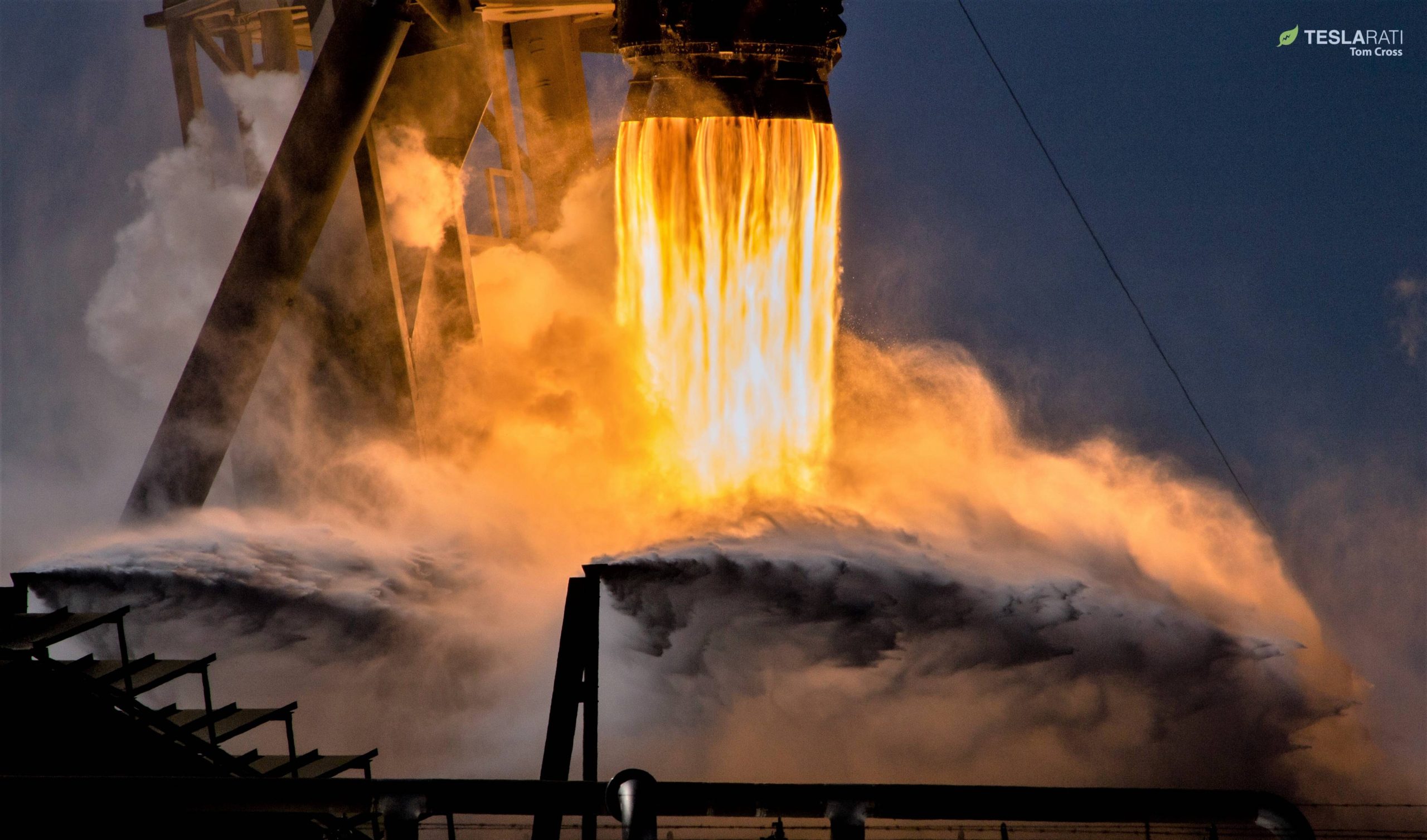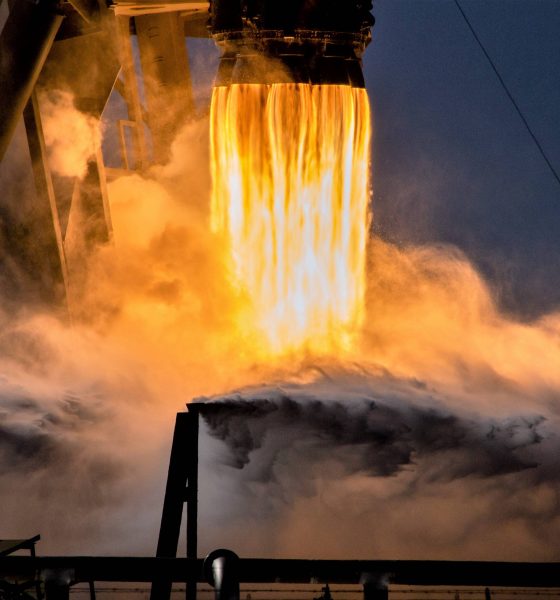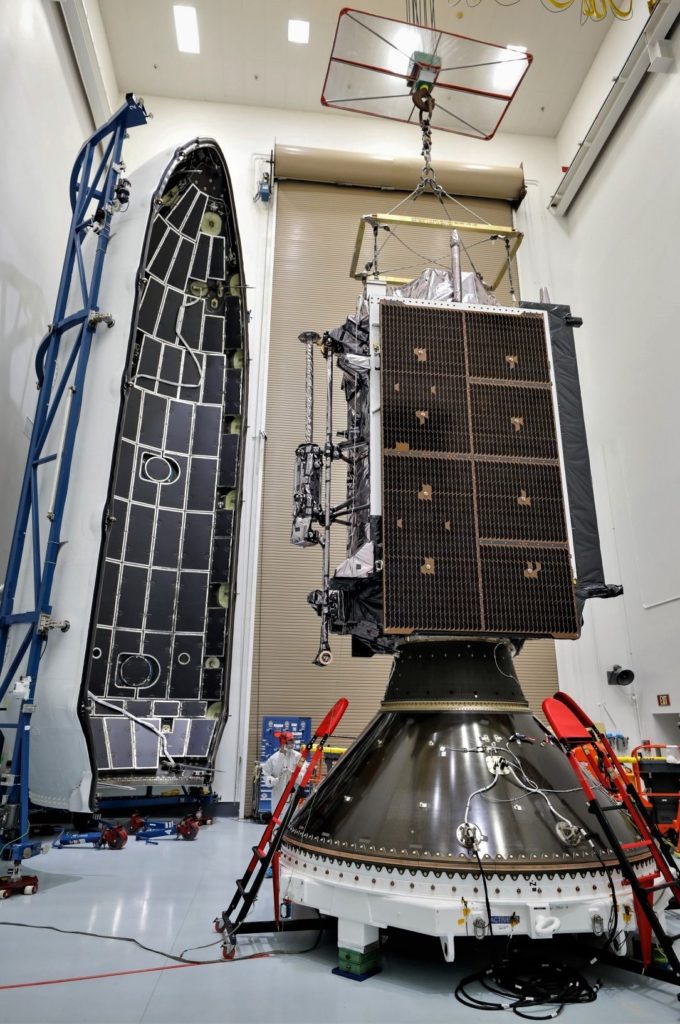

News
SpaceX’s Falcon 9 Block 5 set for first expendable launch with USAF satellite
SpaceX’s most significant US Air Force launch contract yet is set to kick off with a (NET) December 18 launch of the first of 10 next-gen GPS satellites, known as GPS III Space Vehicle 1 (SV01). Thus far, SpaceX has won all five competitive GPS III launch contracts offered thus far by the USAF and – depending on Falcon 9’s performance this launch – could win several more.
Aside from contract victories, SpaceX’s first GPS III launch will be marked by yet another first for the company’s May 2018-debuted Falcon 9 Block 5 rocket. This first is not quite as desirable, though: sans landing legs and titanium grid fins, the new Block 5 booster will be expended after launch and will make no attempt to land.
Via @USAirForce: First GPS III satellite, AKA “Vespucci,” encapsulated in fairing on 12/7 ahead of #SpaceX Falcon 9 launch NET 12/18. This is the company’s first GPS mission and is expendable, so there will be no booster recovery.
(📸: @LockheedMartin) pic.twitter.com/5aOWy1tI5k
— Emre Kelly (@EmreKelly) December 11, 2018
At this point in time, the first official confirmation that Falcon 9 will be flying in an expendable configuration was given in a handful of comments made by Vice President of Launch and Build Reliability Hans Koenigsmann at a Dec. 5 press conference. While focused primarily on the topic at hand (SpaceX’s successful launch of the CRS-16 Cargo Dragon), members of the press managed to squeeze in a few minimally related questions which Hans graciously answered. Speaking about SpaceX’s imminent GPS III launch, Hans noted that,
“GPS is not landing a booster. It doesn’t have the landing hardware, or the majority of the landing hardware. … I looked at the booster yesterday, it’s in great shape and getting integrated in the hangar.
- GPS III SV01 is encapsulated in Falcon 9’s fairing. (SpaceX)
- GPS III SV01 is encapsulated in Falcon 9’s fairing. (SpaceX)
- GPS III SV01 is encapsulated in Falcon 9’s fairing. (SpaceX)
- Spotted by local photographer Tom McCool on November 27th, this 39A-located Falcon 9 booster is the likeliest candidate for the first GPS III launch. (Tom McCool)
Hans also told members of the audience that he believed the expendable profile had stemmed from a customer (i.e. USAF) requirement based on a need for extra performance:
“Regarding GPS not landing, I think this is a customer requirement to have all the performance for the mission. It’s a challenging mission.“
While there was previously some doubt as to whether Falcon 9 was actually incapable of attempting a booster landing after launch, Mr. Koenigsmann’s offhand suggestion that GPS III launches would be “challenging mission[s]” makes it far more likely that the USAF’s given mission profile genuinely demands all of Falcon 9’s performance – not enough propellant will remain for Falcon 9 to attempt recovery. There is, however, still some ambiguity in Hans’ answer.
If Falcon 9 will be expended solely as a consequence of mission performance requirements despite the oddly low payload mass (~3800 kg) and comparatively low-energy orbit (~20,000 km), the only possible explanation for no attempted recovery would be the need for Falcon 9’s upper stage to perform a lengthy second burn after a long coast in orbit. However, the mission parameters the USAF shopped around for would have placed the GPS III satellite into an elliptical orbit of 1000 km by 20,181 km, an orbit that would unequivocally allow Falcon 9 to attempt a drone ship recovery.
- Falcon 9 B1047.2 is seen here conducting its second successful drone ship landing. (SpaceX)
- In a more perfect world, Falcon 9 would have been responsible for the rainbow. (SpaceX)
- Lockheed Martin’s GPS III (SV 01-10) satellite.
- A GPS III spacecraft spreads one of its solar array wings. (USAF)
The reasoning behind this is simple: SpaceX routinely recovers Falcon 9 boosters after far more energetic launches. For example, Falcon 9’s November 15th launch placed the 5300 kg Es’hail-2 satellite into an orbit of 200 km by 37,700 km, after which Falcon 9 B1047.2 performed its second successful landing on drone ship Of Course I Still Love You. A prevailing second theory for the expendable mission lies in the Air Force’s notoriously stodgy and sometimes irrational revulsion at the slightest hint of risk or change – to minimize perceived risk, the USAF could have thus demanded that SpaceX expend Falcon 9 regardless of whether it was capable of doing so.
For GPS III SV01, it appears that only time will tell whether the satellite ends up in an orbit that can properly explain the booster’s premature demise. Given that SpaceX has a full four additional GPS III launches currently on the books, it will be a shame to see a veritable fleet of Falcon 9 Block 5 boosters tossed into the sea after just a single launch each.
For prompt updates, on-the-ground perspectives, and unique glimpses of SpaceX’s rocket recovery fleet check out our brand new LaunchPad and LandingZone newsletters!

Elon Musk
Elon Musk’s X will start using a Tesla-like software update strategy
The initiative seems designed to accelerate updates to the social media platform, while maintaining maximum transparency.

Elon Musk’s social media platform X will adopt a Tesla-esque approach to software updates for its algorithm.
The initiative seems designed to accelerate updates to the social media platform, while maintaining maximum transparency.
X’s updates to its updates
As per Musk in a post on X, the social media company will be making a new algorithm to determine what organic and advertising posts are recommended to users. These updates would then be repeated every four weeks.
“We will make the new 𝕏 algorithm, including all code used to determine what organic and advertising posts are recommended to users, open source in 7 days. This will be repeated every 4 weeks, with comprehensive developer notes, to help you understand what changed,” Musk wrote in his post.
The initiative somewhat mirrors Tesla’s over-the-air update model, where vehicle software is regularly refined and pushed to users with detailed release notes. This should allow users to better understand the details of X’s every update and foster a healthy feedback loop for the social media platform.
xAI and X
X, formerly Twitter, has been acquired by Elon Musk’s artificial intelligence startup, xAI last year. Since then, xAI has seen a rapid rise in valuation. Following the company’s the company’s upsized $20 billion Series E funding round, estimates now suggest that xAI is worth tens about $230 to $235 billion. That’s several times larger than Tesla when Elon Musk received his controversial 2018 CEO Performance Award.
As per xAI, the Series E funding round attracted a diverse group of investors, including Valor Equity Partners, Stepstone Group, Fidelity Management & Research Company, Qatar Investment Authority, MGX, and Baron Capital Group, among others. Strategic partners NVIDIA and Cisco Investments also continued support for building the world’s largest GPU clusters.
News
Tesla FSD Supervised wins MotorTrend’s Best Driver Assistance Award
The decision marks a notable reversal for the publication from prior years, with judges citing major real-world improvements that pushed Tesla’s latest FSD software ahead of every competing ADAS system.

Tesla’s Full Self-Driving (Supervised) system has been named the best driver-assistance technology on the market, earning top honors at the 2026 MotorTrend Best Tech Awards.
The decision marks a notable reversal for the publication from prior years, with judges citing major real-world improvements that pushed Tesla’s latest FSD software ahead of every competing ADAS system. And it wasn’t even close.
MotorTrend reverses course
MotorTrend awarded Tesla FSD (Supervised) its 2026 Best Tech Driver Assistance title after extensive testing of the latest v14 software. The publication acknowledged that it had previously criticized earlier versions of FSD for erratic behavior and near-miss incidents, ultimately favoring rivals such as GM’s Super Cruise in earlier evaluations.
According to MotorTrend, the newest iteration of FSD resolved many of those shortcomings. Testers said v14 showed far smoother behavior in complex urban scenarios, including unprotected left turns, traffic circles, emergency vehicles, and dense city streets. While the system still requires constant driver supervision, judges concluded that no other advanced driver-assistance system currently matches its breadth of capability.
Unlike rival systems that rely on combinations of cameras, radar, lidar, and mapped highways, Tesla’s FSD operates using a camera-only approach and is capable of driving on city streets, rural roads, and freeways. MotorTrend stated that pure utility, the ability to handle nearly all road types, ultimately separated FSD from competitors like Ford BlueCruise, GM Super Cruise, and BMW’s Highway Assistant.
High cost and high capability
MotorTrend also addressed FSD’s pricing, which remains significantly higher than rival systems. Tesla currently charges $8,000 for a one-time purchase or $99 per month for a subscription, compared with far lower upfront and subscription costs from other automakers. The publication noted that the premium is justified given FSD’s unmatched scope and continuous software evolution.
Safety remained a central focus of the evaluation. While testers reported collision-free operation over thousands of miles, they noted ongoing concerns around FSD’s configurable driving modes, including options that allow aggressive driving and speeds beyond posted limits. MotorTrend emphasized that, like all Level 2 systems, FSD still depends on a fully attentive human driver at all times.
Despite those caveats, the publication concluded that Tesla’s rapid software progress fundamentally reshaped the competitive landscape. For drivers seeking the most capable hands-on driver-assistance system available today, MotorTrend concluded Tesla FSD (Supervised) now stands alone at the top.
News
Elon Musk’s Grokipedia surges to 5.6M articles, almost 79% of English Wikipedia
The explosive growth marks a major milestone for the AI-powered online encyclopedia, which was launched by Elon Musk’s xAI just months ago.

Elon Musk’s Grokipedia has grown to an impressive 5,615,201 articles as of today, closing in on 79% of the English Wikipedia’s current total of 7,119,376 articles.
The explosive growth marks a major milestone for the AI-powered online encyclopedia, which was launched by Elon Musk’s xAI just months ago. Needless to say, it would only be a matter of time before Grokipedia exceeds English Wikipedia in sheer volume.
Grokipedia’s rapid growth
xAI’s vision for Grokipedia emphasizes neutrality, while Grok’s reasoning capabilities allow for fast drafting and fact-checking. When Elon Musk announced the initiative in late September 2025, he noted that Grokipedia would be an improvement to Wikipedia because it would be designed to avoid bias.
At the time, Musk noted that Grokipedia “is a necessary step towards the xAI goal of understanding the Universe.”
Grokipedia was launched in late October, and while xAI was careful to list it only as Version 0.1 at the time, the online encyclopedia immediately earned praise. Wikipedia co-founder Larry Sanger highlighted the project’s innovative approach, noting how it leverages AI to fill knowledge gaps and enable rapid updates. Netizens also observed how Grokipedia tends to present articles in a more objective manner compared to Wikipedia, which is edited by humans.
Elon Musk’s ambitious plans
With 5,615,201 total articles, Grokipedia has now grown to almost 79% of English Wikipedia’s article base. This is incredibly quick, though Grokipedia remains text-only for now. xAI, for its part, has now updated the online encyclopedia’s iteration to v0.2.
Elon Musk has shared bold ideas for Grokipedia, including sending a record of the entire knowledge base to space as part of xAI’s mission to preserve and expand human understanding. At some point, Musk stated that Grokipedia will be renamed to Encyclopedia Galactica, and it will be sent to the cosmos.
“When Grokipedia is good enough (long way to go), we will change the name to Encyclopedia Galactica. It will be an open source distillation of all knowledge, including audio, images and video. Join xAI to help build the sci-fi version of the Library of Alexandria!” Musk wrote, adding in a later post that “Copies will be etched in stone and sent to the Moon, Mars and beyond. This time, it will not be lost.”
















